|
Written by: AMM Volunteer/Guest Blogger – J Howell
I grew up in a household where soda, pop tarts and all other sugary goodness was banned from our kitchen cabinets. Every trip to the grocery store, I pleaded with my mother to buy chips, cookies, and a variety of sugary desserts. To my dismay, she would only fill the grocery cart with more fruits, vegetables, and organic snacks. Over time, I began enjoying the taste of fruits and vegetables and found healthier alternatives to satisfy my sweet tooth. By high school, I stopped pleading with my mother about junk food and reaped the benefits of making healthy food choices. My healthy lifestyle quickly went downhill when I moved to Atlanta to attend college. Walking after class to get juicy lemon pepper wings, fries and a large pink lemonade became a weekly tradition and getting a chicken biscuit Saturday mornings became almost routine. Not only were these food items in close proximity to where I lived, it was a social opportunity to catch up and exchange stories with my group of friends. The more fast food I ate, the more I craved it. Even when healthier options presented themselves, I almost always chose greasy, fried and processed. These new unhealthy eating habits along with a lack of exercise and numerous late study nights led to significant weight gain, acne, heightened stress, and low energy. Not only did my eating habits affect me physically and emotionally but also financially. Buying fast food multiple times a week instead of using my meal plan severely cut into my already limited college budget. It was only until I reached this low point in my life, did I realize I needed to gain control over my health. I became a student of nutrition learning from books, documentaries, and even articles on Google. With this new source of information and guidance, I started taking advantage of healthy tips such as 1) making a list before going to the grocery store, 2) cutting up my fruits and vegetables in small containers to have as easily accessible snacks throughout the week, 3) using a one sheet pan to cook my protein and vegetables in the oven at the same time. With time, dedication, and support from family and friends, I made major strides in my health. I was happier, had bounds of energy and even began performing better in school. Since graduating college and entering the workforce, I’m still challenged daily to make the right food decisions. From witnessing my own transformation, I’m committed to helping others make positive healthy lifestyle changes. If you are also interested in exchanging valuable information about healthy eating please feel free to follow us on Twitter, Facebook, and Instagram or visit the Atlanta Mobile Market website where you can also get involved in a wide variety of health advocacy volunteer opportunities. Putting it all Together and Looking to the Future |
| To demonstrate how someone might use the information on food labels to support their health, let’s look at this example scenario: Ms. Smith is a 28-year-old new mom who has decided she would like to lose some weight to improve her health. She goes grocery shopping and carefully looks at food labels to make the best choices. Her first stop is in the bread aisle, where she is comparing different types of bread for sandwiches. She first compares white bread to whole-wheat bread and sees that the whole-wheat bread has an extra 3 grams of fiber per serving, which she knows can help her feel full and make it easier to not over-eat. She then compares two different types of whole-wheat bread and sees that one of them has 50 Calories per slice, while the other has 80 Calories per slice. She chooses to buy the 50-Calorie per slice bread to help her cut back on calories and lose weight. She then looks at different types of peanut butter. She can see that one kind of peanut butter has high fructose corn syrup as an ingredient and 10 grams of sugar per serving, but it is also labeled as “Gluten-Free.” The other one has zero grams of sugar and says nothing about gluten. Since she knows that too much added sugar could be bad for her health, and that gluten isn’t normally found in peanut butter anyways, she chooses the peanut butter with no sugar. When she looks at the serving size, she notices that 1 serving equals 2 Tablespoons, and contains 200 Calories. When she goes home and makes her sandwich, she measures out 1 Tablespoon of peanut butter, so therefore knows that she is eating 100 Calories from the peanut butter. Ms. Smith compared food labels throughout her grocery shopping trip and is confident that she made nutritious food choices--bread with whole grains, more fiber and fewer calories per slice, and a peanut butter with no added sugar--to help her reach her health goals. |
Image Source: http://www.fda.gov/Food/GuidanceRegulation/GuidanceDocumentsRegulatoryInformation/LabelingNutrition/ucm385663.htm
The New and Improved Nutrition Facts Label
The current format for the Nutrition Facts panel has been around for more than 20 years, and many experts agree it is time for an update. The U.S. Food and Drug Administration (FDA) just finalized the format for an updated Nutrition Facts panel, which will go into effect by July 2018. Though the new label will look very similar, it will have a few changes.
First, the Serving Size of many foods will change to reflect the actual amount that is usually consumed at one sitting. This means that the bottle of soda that was previously labeled as containing 2 servings even though most people drink the whole container all at once will now be listed as one serving, and all of the information on the label will have to reflect the new serving size.
Next, as shown on the example above, a line for Added Sugars has been created. Added Sugars come from table sugar, brown sugar, honey, corn syrup, fruit concentrate and juices, cane sugar, malt extract, dextrose and many other sources, but the bottom line is that they are added to the food for sweetness. These added sugars add extra calories but little nutritional value to the food (think fiber, vitamins, etc.) and may be a contributor to rising rates of diabetes and obesity. Foods that are naturally sweet or naturally contain sugars will not have a value in the Added Sugars line, such as whole fruit, 100% fruit juice and dairy products.
Lastly, the new label will be required to list a few vitamins and minerals that were not always essential on the old label. While we’ll still see Calcium and Iron on every label, we’ll also see Vitamin D and Potassium, regardless of whether or not there is much in the food. Also, the old label only listed % DV for each of these nutrients, but the new one will now include unit amounts in milligrams (mg) or micrograms (mcg) per serving.
The objective that officials are hoping to achieve with these changes is that the new label will be more relevant to the nutritional needs of the U.S. population and will be easier to apply to our everyday lives in order to support our health and wellbeing.
Conclusion
From nutrient claims and “health halo” descriptions, to the Nutrition Facts panel and its upcoming changes, the labels on a food package are a valuable source of information when read and understood correctly. By paying attention to food labels for pertinent information, you will be using this resource to your advantage in order to make healthful, educated food choices.
Missed a post? Read Part 1 and Part 2.
The current format for the Nutrition Facts panel has been around for more than 20 years, and many experts agree it is time for an update. The U.S. Food and Drug Administration (FDA) just finalized the format for an updated Nutrition Facts panel, which will go into effect by July 2018. Though the new label will look very similar, it will have a few changes.
First, the Serving Size of many foods will change to reflect the actual amount that is usually consumed at one sitting. This means that the bottle of soda that was previously labeled as containing 2 servings even though most people drink the whole container all at once will now be listed as one serving, and all of the information on the label will have to reflect the new serving size.
Next, as shown on the example above, a line for Added Sugars has been created. Added Sugars come from table sugar, brown sugar, honey, corn syrup, fruit concentrate and juices, cane sugar, malt extract, dextrose and many other sources, but the bottom line is that they are added to the food for sweetness. These added sugars add extra calories but little nutritional value to the food (think fiber, vitamins, etc.) and may be a contributor to rising rates of diabetes and obesity. Foods that are naturally sweet or naturally contain sugars will not have a value in the Added Sugars line, such as whole fruit, 100% fruit juice and dairy products.
Lastly, the new label will be required to list a few vitamins and minerals that were not always essential on the old label. While we’ll still see Calcium and Iron on every label, we’ll also see Vitamin D and Potassium, regardless of whether or not there is much in the food. Also, the old label only listed % DV for each of these nutrients, but the new one will now include unit amounts in milligrams (mg) or micrograms (mcg) per serving.
The objective that officials are hoping to achieve with these changes is that the new label will be more relevant to the nutritional needs of the U.S. population and will be easier to apply to our everyday lives in order to support our health and wellbeing.
Conclusion
From nutrient claims and “health halo” descriptions, to the Nutrition Facts panel and its upcoming changes, the labels on a food package are a valuable source of information when read and understood correctly. By paying attention to food labels for pertinent information, you will be using this resource to your advantage in order to make healthful, educated food choices.
Missed a post? Read Part 1 and Part 2.
The Nutrition Facts Panel
Guest blogger: Emily Vong, RD
The Nutrition Facts panel provides specific information about the nutrient content of that food. This information is useful for anyone needing to follow a specialized diet that is high or low in certain nutrients, or desiring to identify foods that are nutritionally balanced. With all of the scientific terms, numbers and sections, interpreting the Nutrition Facts panel may seem daunting, but taken one step at a time it can be a very worthwhile skill.
| Know Your Serving Size A great place to start when reading the Nutrition Facts panel is right at the top, with Serving Size. This sets the stage to know what amount of the food or beverage that all of the following information refers to. On the example to the [right], the serving size is 1 cup, so if you actually eat the entire package, a total of 2 cups, for example, you’ll have to multiply all the values on the label by 2. Number of servings per container is helpful if you’re not sure what a cup or an ounce or a tablespoon of a food looks like. Here, since there are 2 servings in the container, you’ll be able to estimate that half of the whole container equals 1 serving. |
Balancing Act—Calories
Now, take a look at the Calories. Calories are the fuel our body needs to burn for energy, and they come from fat (oils, butter, animal fats and plant sources), carbohydrates (starches and sugars) and protein (meats, eggs and some plant sources). Generally, the bigger you are, the younger you are, and the more active you are, the more calories you will need. When we eat more calories than our bodies burn, the excess gets stored as fat and leads to weight gain.
Watch Out!—Nutrients to Limit
The Nutrition Facts panel has information to help you identify foods that are high in saturated and trans fats, cholesterol and sodium, since eating too much of these nutrients can contribute to heart disease and other preventable health conditions.
Load Up!—Nutrients to Get Enough Of
Several nutrients are also listed that many people tend to fall short of, including potassium, dietary fiber and various vitamins and minerals. Consuming enough of these nutrients helps to keep your body running in balance, protects against illness, and fights off diseases.
What Does the % Mean? It Doesn’t Add Up to 100?!
For many nutrients, there is a recommended amount that the average person should either consume or not exceed throughout the whole day. Percent Daily Value (% DV) tells what proportion of total recommended daily intake is present in one serving of the food for each nutrient listed. It is a tool to show the nutrients that are high and low in that food and how they fit with everything else consumed that day. The % DV is based on a 2,000-Calorie eating plan, which means that for people who need more or less calories each day, many of these percentages would have to be adjusted proportionally.
Don’t Trip on the Footnotes
At the very bottom of the Nutrition Facts panel are the footnotes. Here you will find extra information about suggested amounts for several nutrients, based on a 2,000- or 2,500-Calorie-per-day eating plan.
What’s In My Food?
All packaged food is required to display a list of all ingredients in the product, starting with the heaviest ingredient and ending with the lightest. Looking at the ingredients list can give some extra cues about the nutrient content of the food. For example, A product contains added sugars if it lists ingredients such as high fructose corn syrup, cane sugar, dextrose, or fruit concentrate, for example.
Now, take a look at the Calories. Calories are the fuel our body needs to burn for energy, and they come from fat (oils, butter, animal fats and plant sources), carbohydrates (starches and sugars) and protein (meats, eggs and some plant sources). Generally, the bigger you are, the younger you are, and the more active you are, the more calories you will need. When we eat more calories than our bodies burn, the excess gets stored as fat and leads to weight gain.
Watch Out!—Nutrients to Limit
The Nutrition Facts panel has information to help you identify foods that are high in saturated and trans fats, cholesterol and sodium, since eating too much of these nutrients can contribute to heart disease and other preventable health conditions.
Load Up!—Nutrients to Get Enough Of
Several nutrients are also listed that many people tend to fall short of, including potassium, dietary fiber and various vitamins and minerals. Consuming enough of these nutrients helps to keep your body running in balance, protects against illness, and fights off diseases.
What Does the % Mean? It Doesn’t Add Up to 100?!
For many nutrients, there is a recommended amount that the average person should either consume or not exceed throughout the whole day. Percent Daily Value (% DV) tells what proportion of total recommended daily intake is present in one serving of the food for each nutrient listed. It is a tool to show the nutrients that are high and low in that food and how they fit with everything else consumed that day. The % DV is based on a 2,000-Calorie eating plan, which means that for people who need more or less calories each day, many of these percentages would have to be adjusted proportionally.
Don’t Trip on the Footnotes
At the very bottom of the Nutrition Facts panel are the footnotes. Here you will find extra information about suggested amounts for several nutrients, based on a 2,000- or 2,500-Calorie-per-day eating plan.
What’s In My Food?
All packaged food is required to display a list of all ingredients in the product, starting with the heaviest ingredient and ending with the lightest. Looking at the ingredients list can give some extra cues about the nutrient content of the food. For example, A product contains added sugars if it lists ingredients such as high fructose corn syrup, cane sugar, dextrose, or fruit concentrate, for example.
Read on to Part 3 of Food Labels 101 for an example scenario putting the nutrition label to work and an overview of future changes.
Guest blogger: Emily Vong, RD
The label on packaged food presents a lot of useful information, not only on the Nutrition Facts panel, typically found on the back of a package, but there are also important details on the front and sides of the package as well. What does it mean when the label says “No Added Sugar” or “Good Source of Fiber”? How about when cherries or one of your other favorite fruits are labeled as “Gluten Free”? Does this mean “Gluten Free” cherries are more nutritious than cherries that don’t come with any label at all? What is the importance of number of Calories and percent Daily Value? This three-part blog series will guide you through understanding all of this information and more to help you make healthful, educated food choices.
Up-Front Labeling and Marketing
In order to promote sales of their product, food manufacturers like to highlight attributes of their product that will appeal to health-conscious shoppers by making nutrition claims and comparisons directly on the food label so it can easily be seen on the shelves of the store.
Nutrition Comparisons-Front and Side Labels
What exactly does it mean for a food to be a “Good source of fiber” or “Reduced Sodium”? Based on FDA regulations, nutrient claims like these must follow specific guidelines.
Claim: “Good Source of ___”
Requirement: 1 serving contains at least 10% of Daily Value (%DV)
Example: Good Source of Fiber (contains 3 grams per serving)
Claim: “Excellent Source of ___”
Requirement: 1 serving contains at least 20% DV
Example: Excellent Source of Calcium (contains 30% DV per serving)
Claim: “Reduced ___”
Requirement: At least 25% less of the nutrient than the regular product
Example: Reduced Fat (contains 30% less fat than original)
Claim: “Light”
Requirement: One-third fewer calories, or half the fat, of regular product
Example: Light [in calories] (contains 40% fewer calories than original)
Sources: http://www.fda.gov/Food/GuidanceRegulation/GuidanceDocumentsRegulatoryInformation/LabelingNutrition/ucm064911.htm
http://www.fda.gov/Food/GuidanceRegulation/GuidanceDocumentsRegulatoryInformation/LabelingNutrition/ucm064916.htm
Up-Front Labeling and Marketing
In order to promote sales of their product, food manufacturers like to highlight attributes of their product that will appeal to health-conscious shoppers by making nutrition claims and comparisons directly on the food label so it can easily be seen on the shelves of the store.
Nutrition Comparisons-Front and Side Labels
What exactly does it mean for a food to be a “Good source of fiber” or “Reduced Sodium”? Based on FDA regulations, nutrient claims like these must follow specific guidelines.
Claim: “Good Source of ___”
Requirement: 1 serving contains at least 10% of Daily Value (%DV)
Example: Good Source of Fiber (contains 3 grams per serving)
Claim: “Excellent Source of ___”
Requirement: 1 serving contains at least 20% DV
Example: Excellent Source of Calcium (contains 30% DV per serving)
Claim: “Reduced ___”
Requirement: At least 25% less of the nutrient than the regular product
Example: Reduced Fat (contains 30% less fat than original)
Claim: “Light”
Requirement: One-third fewer calories, or half the fat, of regular product
Example: Light [in calories] (contains 40% fewer calories than original)
Sources: http://www.fda.gov/Food/GuidanceRegulation/GuidanceDocumentsRegulatoryInformation/LabelingNutrition/ucm064911.htm
http://www.fda.gov/Food/GuidanceRegulation/GuidanceDocumentsRegulatoryInformation/LabelingNutrition/ucm064916.htm
Beware of Buzz-Words
As another form of nutrition-focused branding, food manufacturers often use words on their packages that may give the food a “health halo.” This is the perception that a food is healthy, or healthier than it actually is, which may contribute to a person consuming a larger portion than she or he would otherwise. Though these descriptions and claims may be true, the terms used may have misleading definitions or may not mean much at all in terms of nutritional quality. Some of the most common buzzwords are:
As another form of nutrition-focused branding, food manufacturers often use words on their packages that may give the food a “health halo.” This is the perception that a food is healthy, or healthier than it actually is, which may contribute to a person consuming a larger portion than she or he would otherwise. Though these descriptions and claims may be true, the terms used may have misleading definitions or may not mean much at all in terms of nutritional quality. Some of the most common buzzwords are:
- Natural/All-Natural—there is no true, agreed-upon or regulated definition of “natural.” This often this refers to foods that are free of preservatives or artificial flavors or colors. A product such as packaged chocolate chip cookies could be labeled as “all-natural,” but that doesn’t mean they are a nutritious food choice.
- Gluten-Free—Gluten is a naturally occurring protein in wheat, barley and rye products, and only truly needs to be avoided by people with a gluten allergy or sensitivity. Otherwise, gluten is found in a variety of nutritious foods such as whole-grain bread and whole-wheat pastas. Sometimes, foods that would never contain gluten are labeled gluten-free, such as whole fruits or milk, but that doesn’t mean that those foods are any more nutritious than other brands that don’t have that label. This rule also applies to foods that are labeled as “Free” of other items, such as sugar or fat that would never be there in the first place, such as “Sugar-Free Potato Chips” or “Fat-Free Gummi Bears.”
- Organic—Though organic foods may be produced without certain substances or chemicals, their nutritional value is usually very similar to conventional. Organic foods can also be just as processed and low in nutrients as conventional foods, such as instant Mac ‘n’ Cheese or snack crackers. Choosing to buy organic foods depends on availability, cost and personal preference.
- Made with Whole Grain—In general, a food made from whole grains is more nutritious than an equivalent food made from refined “white” grains, due to a higher content of fiber and naturally occurring vitamins and minerals. However unless the label states “100% Whole Grain,” or the very first ingredient is “Whole ___" or "Whole Grain ___,” foods that are “Made with Whole Grain” may only contain a small amount of nutrient-rich whole grains and mostly contain nutrient-poor white grains or flour.
When shopping for fruits and vegetables, it is easy to notice that some foods are advertised as organic while some are not. Deciding to buy Organic, Non-Organic/Conventional, or Certified Naturally Grown produce is a choice that depends on access, availability, and affordability.
By understanding labels and growing processes you can become an informed, empowered shopper and begin to notice the similarities and differences in how farming practices and federal regulations (displayed through food labels/store barcodes) impact the environment, farmers, and food consumers.
By understanding labels and growing processes you can become an informed, empowered shopper and begin to notice the similarities and differences in how farming practices and federal regulations (displayed through food labels/store barcodes) impact the environment, farmers, and food consumers.
| Organic
|
| Non-Organic/Conventional
|
| Certified Naturally Grown
|
Barcodes reveal information (2) about how your produce was grown:
Organic or Non-Organic/ Conventional. Produce that is Certified Naturally Grown or from community-based farmers and mobile markets often have no labels. They are either sourced from, or directly sold by, farmers. Organic produce barcodes have five digits and begin with "9" (e.g., 9XXXX). Non-organic/conventional produce barcodes have four digits and begin with "4" (e.g., 4XXX).
Organic or Non-Organic/ Conventional. Produce that is Certified Naturally Grown or from community-based farmers and mobile markets often have no labels. They are either sourced from, or directly sold by, farmers. Organic produce barcodes have five digits and begin with "9" (e.g., 9XXXX). Non-organic/conventional produce barcodes have four digits and begin with "4" (e.g., 4XXX).
The Environmental Working Group (3) has identified the “Dirty Dozen4,” which are fruits and vegetables with the most synthetic chemicals left behind when conventionally grown. In contrast, the “Clean Fifteen” (4) typically have little traces of chemicals when grown conventionally. Buying organic or naturally grown fruits and vegetables when possible can reduce your exposure to chemicals.
Here are ways to make the most of your food budget while ensuring your produce is high quality and nutritious:
The Atlanta Mobile Market's mission is to improve access to fresh fruit, vegetables, and health information in limited access settings to improve the health and well-being of the communities we serve.
- Buy produce that’s in season (5) (typically less expensive option).
- Shop at community-based farmers markets (6) that accept WIC (7)/SNAP (8) and/or participate in fruit/vegetable incentive programs (9).
- Buy in bulk when the prices are low and save for a later time (i.e., freeze, can, or dry).
The Atlanta Mobile Market's mission is to improve access to fresh fruit, vegetables, and health information in limited access settings to improve the health and well-being of the communities we serve.
Guest blogger: Emily Vong, RD
References:
References:
- https://www.ams.usda.gov/sites/default/files/media/What is Organic Certification.pdf
- http://www.myorganicfoodclub.com/about-us/
- https://www.ewg.org/foodnews/index.php
- https://www.ewg.org/foodnews/faq.php - question_8
- http://fresheverydayproduce.com/in-season/
- http://www.fns.usda.gov/ebt/state-farmers-market-resources
- http://www.fns.usda.gov/fmnp/wic-farmers-market-nutrition-program-fmnp
- http://www.fns.usda.gov/ebt/snap-and-farmers-markets
- http://www.wholesomewave.org/
Author
The Atlanta Mobile Market
Archives
July 2017
September 2016
May 2016
January 2016


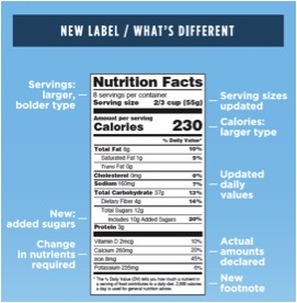
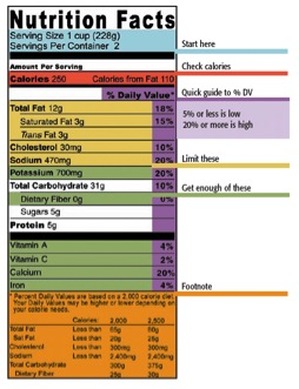
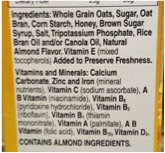
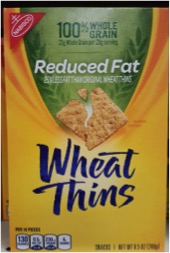
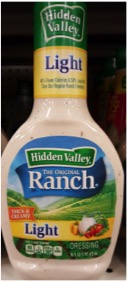
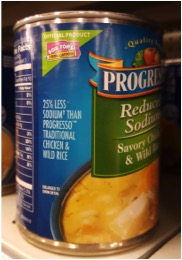
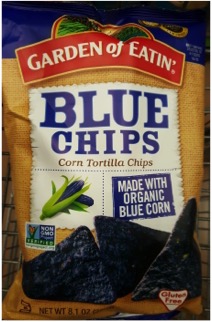
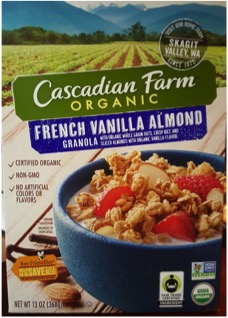
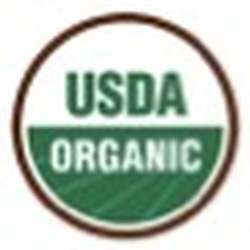


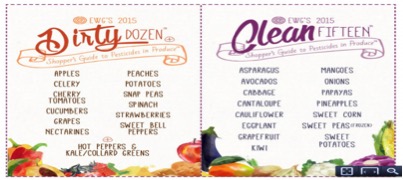
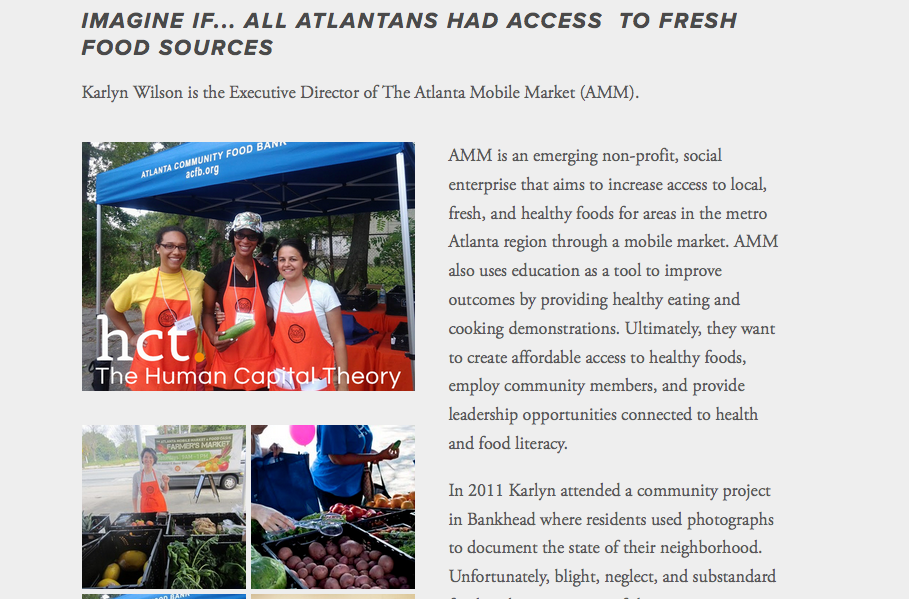
 RSS Feed
RSS Feed